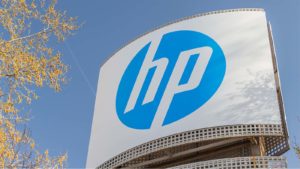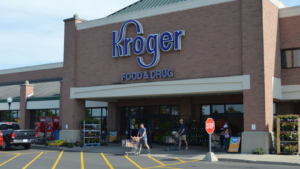The average investor, however, can be successful in their own right by following the advice and actions of Buffett. Looking across the list of Warren Buffett stocks, we can see that the “Oracle of Omaha” focuses on owning shares of high-quality companies that have significant competitive advantages and prospects for future growth.
This article will examine three of our favorite Warren Buffet-approved dividend stocks.
Bank of America (BAC)

Berkshire Hathaway owns just over 1 billion shares of Bank of America (NYSE:BAC) stock, worth approximately $34 billion. Bank of America is one of the largest financial institutions in the world. The company produces revenue of $86 billion annually. It offers traditional banking services, such as deposits, checking accounts, credit cards, and consumer and commercial lending. The company provides wealth management services as well.
Bank of America posted third-quarter earnings on Oct. 17, and results were better than expected on both the top and bottom lines. Earnings per share (EPS) came to 90 cents, which was 8 cents better than expected. Revenue was also up 2.9% year-over-year to $25.2 billion, which was $130 million ahead of estimates.
Net interest income was $614 million higher, or 4%, to $14.4 billion. This was primarily driven by higher interest rates and loan growth. Non-interest income was $10.8 billion, up $51 million, as higher sales and trading revenue, as well as asset management fees, more than offset lower other income. Provisions for credit losses were $1.2 billion, up $336 million. This was due to a net reserve build of $303 million in Q3 versus a net reserve build of $378 million a year ago. Net charge-offs were $931 million.
Bank of America remains highly focused on reducing spending where possible, and it has finally begun building its loan book. The bank has also aggressively bought back shares in the past, which will help boost EPS. We expect 8% annual EPS growth over the next five years for BAC.
In the meantime, the stock has a solid dividend yield of 3.1%. Bank of America started to raise its dividend payout ratio several years ago, but the company still only pays out less than a third of its profits in the form of dividends. The dividend in its current state is safe, even if earnings were to decline precipitously.
HP (HPQ)

HP (NYSE:HPQ) is a technology company that recent underwent a major transformation. After spinning off Hewlett Packard Enterprise Company (NYSE:HPE) — which was its enterprise technology infrastructure, software and services business — HP now focuses on printers and personal systems, which includes computers and mobile devices. Berkshire owns just over 51 million shares of HPQ, for a market value of approximately $1.5 billion.
HP reported its fourth-quarter results on Nov. 21. The company reported revenue of $13.8 billion for the quarter, which was down 7% from the previous year’s quarter. This was slightly better than the revenue decline that HP experienced during the previous quarter. Non-GAAP EPS totaled 90 cents during the fourth quarter, which was in line with the analyst consensus estimate.
The company currently forecasts EPS in a range of 76 cents to 86 cents for the first quarter. EPS hit a new record level in fiscal 2022, but 2023 was a weaker year again. For the current year, HP forecasts EPS of around $3.45.
During the last couple of years HP’s EPS rose thanks to a combination of growing net earnings and a declining share count. HP is a leader in the printing and personal computing markets, but these are areas that face challenges as consumers continue to shift to mobile devices. The adoption of 3D printing could help, as HP is already entrenched in this industry. Still, even without any meaningful business growth, HP can generate earnings growth on a per-share basis with buybacks. HP reduced its share count by more than 30% between 2016 and 2022.
HP’s dividend looks quite safe today, as it is easily covered by both profits and cash flows. HPQ stock currently yields 3.7%.
Kroger (KR)

Kroger (NYSE:KR) is one of the largest supermarkets in the U.S. The company has nearly 2,800 retail stores under two dozen banners, along with fuel centers, pharmacies and jewelry stores in 35 states. The company serves about 11 million customers a day. On Oct. 14, Kroger announced that it had entered into a definitive merger agreement with Albertsons (NYSE:ACI).
Kroger intends to purchase all of Albertsons’ outstanding shares at $34.10 per share, for a total value of roughly $25 billion. In an effort to garner the necessary approvals and ease regulators, Kroger and Albertsons announced a divestiture plan in which it will sell 413 stores, eight distribution centers, two offices and five private label brands to C&S Wholesale Grocers, LLC for roughly $1.9 billion.
On Nov. 30, Kroger reported third-quarter 2023 results for the period ending Nov. 4. (Kroger’s fiscal year ends the Saturday closest Jan. 31.) For the quarter, Kroger reported $34 billion in sales, down 0.6% compared to Q3 2022. Excluding fuel, sales decreased 0.5% compared to the year ago period. Adjusted EPS equaled 95 cents compared to 88 cents in 2Q22.
The announced merger with Albertsons is also a major catalyst, as this will see the combined company operating more than 4,996 stores, 66 distribution centers, 52 manufacturing plants, 3,972 pharmacies and 2,015 fuel centers.
Kroger has increased its dividend for 17 consecutive years. The payout ratio for the current fiscal year is expected to be under 30%. KR stock yields 2.6%.
On the date of publication, Bob Ciura did not hold (either directly or indirectly) any positions in the securities mentioned in this article. The opinions expressed in this article are those of the writer, subject to the InvestorPlace.com Publishing Guidelines.
